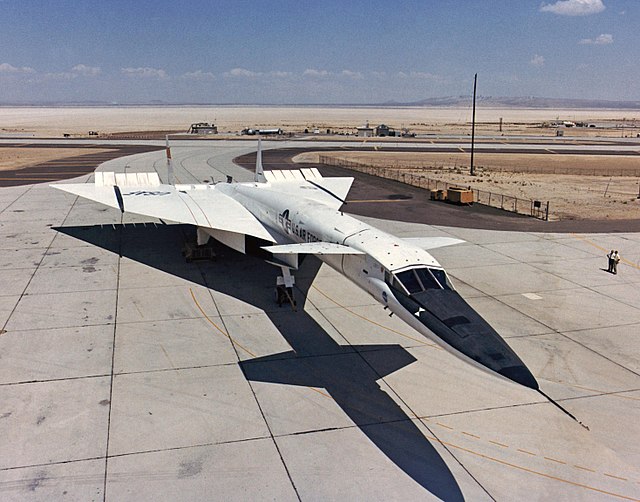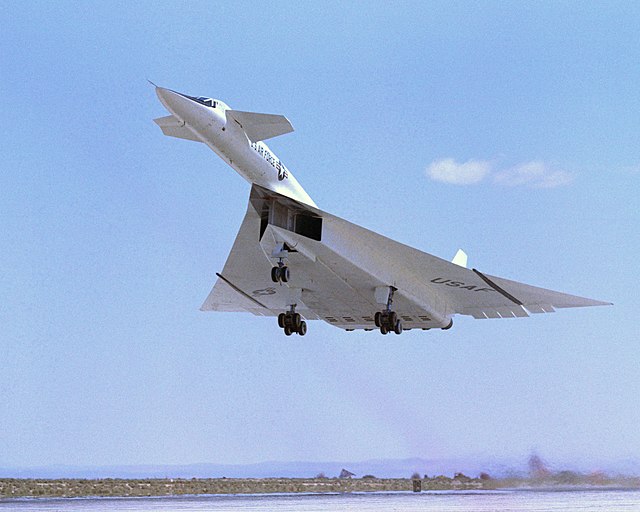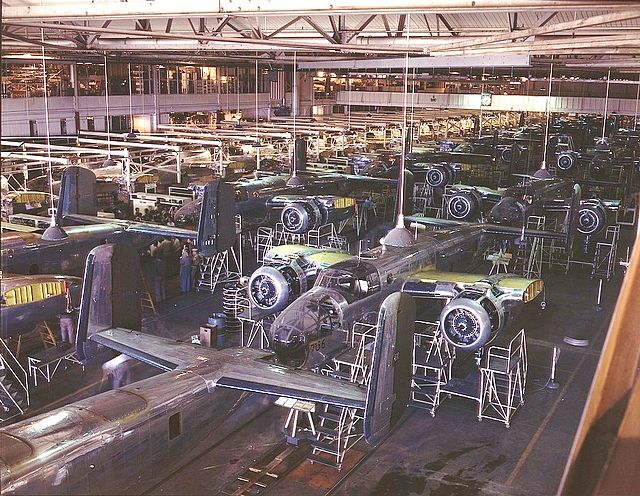North American XB-70 Valkyrie
The North American Aviation XB-70 Valkyrie is a retired prototype version of the planned B-70 nuclear-armed, deep-penetration supersonic strategic bomber for the United States Air Force Strategic Air Command. Designed in the late 1950s by North American Aviation (NAA) to replace the aging B-52 Stratofortress and B-58 Hustler, the six-engined, delta-winged Valkyrie could cruise for thousands of miles at Mach 3+ while flying at 70,000 feet (21,000 m).
North American XB-70 Valkyrie
XB-70A parked at Edwards Air Force Base in 1967
XB-70A on the taxiway on 21 September 1964, the day of the first flight
XB-70A Valkyrie taking off in August 1965
North American Aviation (NAA) was a major American aerospace manufacturer that designed and built several notable aircraft and spacecraft. Its products included the T-6 Texan trainer, the P-51 Mustang fighter, the B-25 Mitchell bomber, the F-86 Sabre jet fighter, the X-15 rocket plane, the XB-70, the B-1 Lancer, the Apollo command and service module, the second stage of the Saturn V rocket, and the Space Shuttle orbiter.
P-51D-5-NA Mustang
B-25 Mitchell bomber production line at the North American Aviation plant, Inglewood, California, October 1942. The plane's outer wings have yet to be added, which enables the two side-by-side assembly lines to be closer together. The outer wings will be attached outdoors, in the "sunshine" assembly line.
XB-70 Valkyrie
Apollo spacecraft being prepared for the Apollo 7 mission







